Robert Allen Meyers (Editor)9780122274107
The new 18-volume edition of the Encyclopedia of Physical Science and Technology, 3E, will have the added feature of an Index Volume, containing abstracts of all of the articles in the encyclopedia.
The latest edition of the Encyclopedia of Physical Science and Technology:
Has been completely updated with no less than 90% revised material and 50% new content throughout the volumes
Presents eighteen volumes, nearly 800 authoritative articles and 14,500 pages
Is lavishly illustrated with over 7,000 photographs, illustrations and tables
Presents an increased emphasis on the hottest topics such as information processing, environmental science, biotechnology and biomedicine
Includes a final Index Volume containing Thematic, Relational and Subject indexes
Table of contents :
Cover Page……Page 1
Table of Contents……Page 2
Glossary……Page 4
Semimicro Qualitative Analysis……Page 5
Gravimetric Analysis……Page 6
Neutralization Titrations……Page 7
Complexometric Titrations……Page 8
Absorption of Electromagnetic Radiation……Page 9
Atomic Absorption……Page 10
Optical polarization……Page 11
Ultraviolet–visible……Page 12
Infrared……Page 13
Electron spin resonance……Page 14
Nuclear magnetic resonance……Page 15
Nuclear γ -ray resonance spectroscopy……Page 16
X-ray fluorescence spectroscopy……Page 17
Fluorescence spectroscopy……Page 18
Activation analysis……Page 19
Principles of Chromatography……Page 20
Gas Chromatography……Page 21
Ion Chromatography……Page 22
Chromatographic Methods in Biochemical Science……Page 23
Indicator and reference electrodes……Page 24
Voltammetry and Polarography……Page 25
Amperometric Titrations……Page 26
Ion Sources……Page 27
Other Components……Page 28
Differential Thermal Analysis and Differential Scanning Calorimetry……Page 29
Electron Spectroscopy……Page 30
X-Ray Photoelectron Spectroscopy or Electron Spectroscopy for Chemical Analysis……Page 31
Auger Electron Spectroscopy……Page 32
Surface Analysis……Page 33
Chemical Sensors……Page 34
Optical Devices……Page 35
Microprocessor Control……Page 36
Pattern recognition……Page 37
Selectivity vs Specificity……Page 38
References……Page 39
Glossary……Page 41
Atomic Absorption Spectrometry (AAS)……Page 42
Detection of Elemental Ions……Page 43
Wavelength Selection……Page 44
Photon Detection……Page 45
Theoretical Background……Page 46
Instrumentation……Page 47
Instrumentation for Multi-Element Analysis……Page 48
Spectral Interferences……Page 49
Glow Discharge Plasma……Page 51
Other Plasmas……Page 52
Theoretical Background……Page 53
Instrumentation……Page 54
Instrumentation……Page 56
Inert Gas Requirements……Page 57
Background Correction……Page 58
Light Source……Page 59
Detection of Elemental Ions……Page 60
Comparisons of the Atomic Spectrometric Techniques……Page 61
References……Page 62
Introduction……Page 63
The Auger Process and Auger Electron Spectroscopy……Page 64
Applications in Materials Science……Page 65
Conclusions……Page 67
References……Page 68
Glossary……Page 69
Principles of Capillary Electrophoresis……Page 70
Initial Zone Width (hinj)……Page 72
Power Supply……Page 73
Absorbance……Page 74
Fluorescence……Page 75
Separation Conditions for Capillary Zone Electrophoresis……Page 76
Affinity Capillary Electrophoresis……Page 77
Separation Conditions for Capillary Isoelectric Focusing……Page 78
Capillary Sieving Techniques……Page 79
Replaceable Polymer Solutions……Page 80
Micellar Electrokinetic Chromatography……Page 81
References……Page 82
Glossary……Page 83
Electron-Transfer Dynamics (Kinetics and Thermodynamics)……Page 85
Principles and Fundamental Relations……Page 86
Electrode Systems……Page 88
Applications of Potentiometry……Page 90
Diffusion to a Planar Electrode……Page 92
Polarography……Page 93
Linear Sweep and Cyclic Voltammetry……Page 95
Controlled-Potential Bulk Electrolysis……Page 96
Electron-Transfer Processes……Page 97
Metals……Page 98
Metal Complexes……Page 99
Free Electron (e-); Ultimate Base and One-Electron Reductant in Any Matrix……Page 100
Hydronium Ions, Brønsted Acids, and Molecular Hydrogen……Page 102
Oxidation of Dissolved Dihydrogen (H2)……Page 103
Molecular Oxygen……Page 104
Hydrogen Peroxide (HOOH, H2O2)……Page 105
Elemental Sulfur (S8)……Page 107
Carbon Dioxide (CO2)……Page 108
Organic Molecules……Page 109
Alkyl- and Aryl-Halides……Page 110
Carbonyl Groups, Olefins, and Aromatic Hydrocarbons……Page 112
Ferrocene……Page 113
Iron-Pentacarbonyl……Page 114
Chloro-Alkali Production……Page 115
Edison Battery……Page 116
Lithium……Page 117
See also the Following Articles……Page 118
References……Page 119
Glossary……Page 120
Experimental Aspects……Page 121
Isotropic Hyperfine Analysis……Page 122
Relation of Hyperfine Constants to Spin Densities……Page 125
Second-Order Huperfine Effects……Page 127
Anisotropic Hyperfine Interaction……Page 128
Spin Relaxation……Page 129
Double-Resonance and Tine-Domain ESR……Page 130
Applications……Page 132
References……Page 133
Glossary……Page 135
Background……Page 136
Moving-Boundary Electrophoresis……Page 137
Origin of Molecular and Particulate Charge……Page 139
Stationary Boundaries……Page 141
Electrophoretic Mobility, Sedimentation Coefficient, and Diffusion Coefficient for Macroions……Page 142
Conventional Procedures……Page 143
Electrophoretic Light Scattering……Page 144
Polyacrylamide Gel Electrophoresis……Page 145
Molecular Properties Important for Polyacrylamide Gel Electrophoresis……Page 146
Estimation of Relative Masses Using Polyacrylamide Gel Electrophoresis……Page 147
Isoelectric Focusing and Isotachophoresis……Page 148
Two-Dimensional Polyacrylamide Gel Electrophoresis……Page 149
References……Page 150
Glossary……Page 151
Simultaneous Determination of Carbon, Hydrogen, and Nitrogen……Page 152
Kjeldahl Method for Nitrogen Determination……Page 154
Determination of Sulfur……Page 156
Decomposition Methods……Page 158
Determination of Fluorine……Page 159
Determination of Arsenic and Phosphorus……Page 160
Other Methods for Determining Atomic Ratios……Page 161
References……Page 162
Gas Chromatographic Molecular Separation……Page 164
Physical Principles……Page 165
Separation Columns……Page 169
The Flame-Ionization Detector……Page 174
Other Detection Techniques……Page 175
GC/Mass Spectrometry……Page 176
Instrumentation……Page 177
Applications……Page 178
References……Page 181
Glossary……Page 182
Infrared Spectra Coordinates……Page 183
Diatomic Vibrations……Page 184
Infrared Absorption……Page 185
Symmetry and Infrared Activity……Page 186
Effect of Anharmonicity……Page 187
Fermi Resonance……Page 188
Gas-Phase Band Contours……Page 189
Grating Spectrophotometers……Page 190
Fourier Transform Infrared Spectrometers……Page 191
Gas Samples……Page 192
Potassium Bromide Disks……Page 193
Internal Reflectance……Page 194
Infrared Microspectroscopy……Page 195
Derivative Spectra……Page 196
Beer’s Law Deviations……Page 197
Base Line Method……Page 198
Multicomponent Analysis……Page 199
Concept of Group Frequencies……Page 200
Survey of Group Frequencies……Page 201
See also the Following Articles……Page 204
References……Page 205
Glossary……Page 206
Pump……Page 207
Column Dimensions and Hardware……Page 208
Column Packing Supports……Page 209
Column Packing Technique……Page 211
HPLC Detectors……Page 212
Capillary HPLC……Page 216
Adsorption LC……Page 218
Partition LC……Page 220
Chiral Separations……Page 223
Ion-Exchange LC……Page 224
Size-Exclusion LC……Page 227
Choosing a Separation Technique……Page 228
Programming an LC Variable……Page 229
Sample Derivatization Chemistry……Page 231
References……Page 233
Glossary……Page 234
Current Status in Medicine……Page 235
Historical Development……Page 236
Nuclear Magnetism……Page 238
Bloch Equations……Page 240
Relaxation Times……Page 242
System Considerations……Page 245
Magnets……Page 246
Safety Considerations……Page 248
Selective Excitation……Page 249
Spin-Warp Technique……Page 250
Proton Imaging……Page 252
Current Trends……Page 254
References……Page 256
Glossary……Page 257
Direct Insertion Probe……Page 258
Gas chromatography……Page 259
Capillary electrophoresis……Page 260
Electron Ionization……Page 261
Electrospray Ionization……Page 262
Matrix-Assisted Laser Desorption Ionization……Page 263
Magnetic and Electric Sectors……Page 264
TOF Mass Analyzers……Page 265
Ion Traps……Page 266
Electron Multipliers……Page 267
Exact Mass Measurement……Page 269
References……Page 270
Glossary……Page 271
Sample Inlet……Page 272
Ion Generation……Page 273
Quadrupole Instrument……Page 275
Ion Trap Detector……Page 276
Mass Focusing……Page 277
Data Evaluation……Page 278
Arson Analysis……Page 279
Environmental Issue……Page 280
References……Page 281
Glossary……Page 282
Background……Page 283
Conventional Microwave Spectrometer……Page 284
Millimeter/Submillimeter-Wave Spectrometer……Page 285
Line Intensities and Shapes……Page 286
Evaluation of the Moments of Inertia……Page 287
Rigid-Rotor Energy Levels and Spectra……Page 289
Diatomic and Linear Molecules……Page 290
Symmetric-Top Molecules……Page 291
Asymmetric-Top Molecules……Page 292
Spectral Assignment Aids……Page 295
Double Resonance……Page 297
Structural Information……Page 298
Selected Structural Information……Page 300
Free Radicals and Ions……Page 302
H-Bonded Complexes……Page 303
Rotational Isomerism and Ring Conformations……Page 305
Centrifugal Distortion Effects……Page 308
Asymmetric-Top Molecules……Page 309
Information from Distortion Constants……Page 310
Diatomic Molecules……Page 311
I-Type Doubling in Linear Molecules……Page 312
Internal Rotation……Page 313
Single Top with a Threefold Barrier……Page 314
Rotational Isomerism……Page 315
Evaluation of Molecular Structures……Page 316
Equilibrium Structure……Page 317
Effective Structure……Page 318
Substitution Structure……Page 319
Scaled Structure……Page 320
Stark Effect and Zeeman Effect……Page 321
Linear and Symmetric-Top Molecules……Page 322
Asymmetric-Top Molecules……Page 323
Zeeman Effect……Page 324
Linear and Symmetric-Top Molecules……Page 325
Asymmetric-Top Molecules……Page 326
Spectroscopy of Isotope-Substituted Nonpolar Molecules……Page 328
Unstable and Semistable Species……Page 329
Low-Temperature Spectroscopy……Page 330
Fourier-Transform Microwave Spectroscopy……Page 332
See also the Following Articles……Page 334
References……Page 335
Glossary……Page 336
Introduction……Page 337
The Nucleus as a Probe of Molecular Structure; Internal Interactions and the Effects of Motion……Page 338
Shielding; Chemical Shifts……Page 341
Dipolar Interaction……Page 343
NMR Spectra of Liquids……Page 344
NMR in Solids……Page 347
Pulse and Fourier Transform NMR……Page 349
Two-Dimensional NMR……Page 350
Coupled Spins 12……Page 351
Medical Imaging……Page 352
See also the Following Articles……Page 354
References……Page 355
Glossary……Page 356
Introduction……Page 358
Chromatographic Methods……Page 359
Droplet Countercurrent Chromatography……Page 361
Detection Systems……Page 362
Enantiomeric Analysis of Amino Acids by HPLC……Page 363
Derivatization Gas Chromatography……Page 364
Cyclodextrins……Page 365
Separation and Identification of Geometrical and Optical Isomers……Page 366
Carbon Skeleton Determination of Organic Compounds……Page 367
Selective Removal of Compounds from Mixtures……Page 368
Pyrolysis Gas Chromatography (Py/GC)……Page 369
Extraterrestrial Matter……Page 370
Interfacing Supercritical Fluid Chromatography with Fourier Transform IR (SFC–FTIR)……Page 371
High-Performance Thin-Layer Chromatography……Page 372
Radiochemical Techniques……Page 373
In Situ Chemical Reactions on TL Plates……Page 374
Capillary Electrochromatography (CEC)……Page 375
Fourier Transform Infrared Spectroscopy……Page 376
Diffuse Reflectance Fourier Transform Spectrometry (DRIFTS)……Page 377
Matrix Isolation Fourier Transform Spectrometry (MI-FTIR)……Page 378
Protein sample preparation……Page 379
Fourier Transform Raman Spectroscopy (FT-RS)……Page 380
Mass Spectrometry (MS)……Page 381
GC–MS–MS……Page 383
Nuclear Magnetic Resonance Spectroscopy……Page 384
Nuclear Magnetic Resonance (NMR)……Page 385
13C NMR Spectroscopy……Page 386
Two-Dimensional NMR Spectroscopy 2D-NMR)……Page 388
Applications of 2D-NMR Spectroscopy……Page 389
Supersonic Jet Spectroscopy……Page 390
Chemical Analysis……Page 391
References……Page 392
Introduction……Page 394
Advantages……Page 396
Pulsed Photoacoustic Spectrometer……Page 397
Cuvette Cell……Page 398
Biophysics of Proteins and Organic Molecules……Page 399
Dermatology……Page 400
Biomass Determination……Page 401
Photoacoustic signal generation leaves…….Page 402
Light state transitions…….Page 403
Environmental Sciences……Page 405
References……Page 406
Basic Principles……Page 407
Photoelectron Spectra……Page 408
Comparison to the Optical Spectrum of the Ion……Page 410
Photoelectron Spectra of Solids……Page 411
Angle-Resolved Photoelectron Spectra……Page 413
The Independent-Particle Model……Page 415
Secondary Structures in PE Spectra……Page 416
Final State Effects……Page 419
Vibrational Fine Structure……Page 421
Instrumentation……Page 423
Radiation Source……Page 424
Collision Chamber and Sample Inlet System……Page 426
Electron Energy Analyzer……Page 427
Detectors……Page 429
Some Examples……Page 430
Free Molecules……Page 431
Energy Band Mapping……Page 432
Atomic Charges……Page 434
Investigation of Adsorbates……Page 436
Studies in Corrosion……Page 437
New Directions……Page 438
References……Page 439
Glossary……Page 441
Classical Model of Raman Scattering……Page 442
Quantum Mechanical Model of Raman Scattering……Page 444
Appearance of A Raman Spectrum and Units……Page 446
Polarization Properties of Raman Scattering……Page 447
Detectors……Page 448
Basic Experimental Techniques……Page 449
Surface-Enhanced Resonance Raman Spectroscopy……Page 450
Confocal Raman Microscopy……Page 451
Hyper-Raman Spectroscopy……Page 452
Chemical Applications……Page 453
SERS of Self-Assembled Monolayers at the Solid/Liquid Interface……Page 454
SPP-Enhanced Raman Spectroscopy of Carbon Clusters……Page 455
Biochemical Applications……Page 456
The Solid State……Page 458
Phase Transitions……Page 459
Recent Developments—Single Molecule Sers (SMSERS)……Page 460
References……Page 461
Glossary……Page 463
Scanning Tunneling Microscopy (STM)……Page 464
Atomic Force Microscopy (AFM)……Page 465
Applications of Scanning Tunneling Microscopy (Stm)……Page 467
Applications of Atomic Force Microscopy (Afm)……Page 469
Near-Field Scanning Optical Microscopy (NSOM)……Page 470
Magnetic Force Microscopy (MFM)……Page 473
Electric Force Microscopy (EFM) and Scanning Surface Potential Microscopy (SSPM)……Page 474
Scanning Electrochemical Microscopy (SECM)……Page 475
Scanning Thermal Microscopy (SThM)……Page 476
References……Page 477
Glossary……Page 479
Acoustic Cavitation……Page 480
Two-Site Model of Sonochemical Reactivity……Page 481
Microjet Formation during Cavitation at Liquid–Solid Interfaces……Page 482
Single-Bubble Sonoluminescence……Page 483
Spectroscopic Probes of Cavitation Conditions……Page 485
Sonochemistry……Page 486
Homogeneous Sonochemistry: Bond Breaking and Radical Formation……Page 487
Applications of Sonochemistry to Materials Synthesis and Catalysis……Page 488
Heterogeneous Sonochemistry: Reactions of Solids with Liquids……Page 489
References……Page 491
Glossary……Page 493
History……Page 494
Fluorescence Spectroscopy (FS)……Page 495
Raman Spectroscopy……Page 496
Inductively Coupled Plasma-Optical Emission Spectroscopy (ICP-OES)……Page 497
Conclusion……Page 498
References……Page 499
Glossary……Page 500
Scope of Thermal Analysis……Page 501
Nomenclature……Page 502
Symbols……Page 504
Standardization……Page 505
Reporting Thermal Analysis Data……Page 506
Furnace Design……Page 507
Publications and Books on Thermal Analysis……Page 508
Nomenclature for DTA……Page 509
Theory of DTA……Page 511
Introduction……Page 512
Introduction……Page 513
Mass Spectrometric Methods……Page 514
Infrared Spectroscopic Methods……Page 515
Apparatus……Page 516
Dynamic Mechanical Analysis……Page 517
Introduction……Page 518
The Role of the Computer……Page 519
Kinetic Considerations……Page 520
References……Page 521
Glossary……Page 522
Introduction……Page 523
Projection Reconstruction……Page 524
Filtered backprojection algorithm…….Page 525
Backprojection filtering algorithm…….Page 526
True three-dimensional reconstruction algorithm for generalized geometry……Page 527
Direct Fourier reconstruction……Page 529
Overview……Page 530
Data Acquisition……Page 531
Computer……Page 532
X-Ray Computerized Tomography……Page 533
X-Ray source……Page 534
Data acquisition and reconstruction algorithms……Page 535
Third generation……Page 536
Cardiovascular computerized tomography……Page 537
Positron Emission Tomography……Page 538
Advantages of PET……Page 539
Sampling……Page 540
Correction of random and scattered coincidences……Page 541
Circular ring systems……Page 542
Nuclear Magnetic Resonance Computerized Tomography……Page 543
Nuclear magnetic resonance physics……Page 544
Algorithm for direct Fourier imaging technique……Page 549
Basic principles……Page 550
Planar-integral projection reconstruction……Page 551
Spin-echo imaging……Page 552
Chemical-shift imaging……Page 553
System Configuration……Page 554
Recent Developments……Page 555
References……Page 556
Glossary……Page 557
Pump-Probe Techniques……Page 558
Direct Observation of Nai Dissociation Reaction……Page 559
Solvation Dynamics in Polar Liquids……Page 560
Electron Transfer in Photosynthetic Reaction Centers……Page 561
Energy Transfer in Antenna……Page 562
Ultrafast Dynamics……Page 563
Scattering Processes in Semiconductors and Their Nanostructures……Page 564
References……Page 566
Glossary……Page 567
Use of X Rays for Materials Characterization……Page 568
Origin and Properties of X Rays……Page 569
X-Ray Fluorescence Spectrometry……Page 572
Application of X-Ray Spectrometric Methods……Page 575
Trace Analysis by X-Ray Fluorescence Spectrometry……Page 576
X-Ray Powder Diffractometry……Page 577
Application of X-Ray Diffraction Methods……Page 579
Combined Diffraction and Spectroscopic Techniques……Page 581
References……Page 582
Glossary……Page 583
The Photoelectric Effect and Secondary Processes……Page 584
Properties of Solids and Surface Sensitivity……Page 586
Radiation Sources……Page 587
Energy Analyzers……Page 589
Depth Profiling, Angle-Resolved Analysis……Page 591
Chemical Oxidation State Determination……Page 592
Quantitative Analysis……Page 593
Initial and Final State Effects……Page 594
Examples……Page 595
Electron Donor-Electron Acceptor Interactions in Bimetallic Systems……Page 596
FiniteSize Effectson Core-Level-to-Shake-up Satellite Intensities……Page 597
References……Page 599
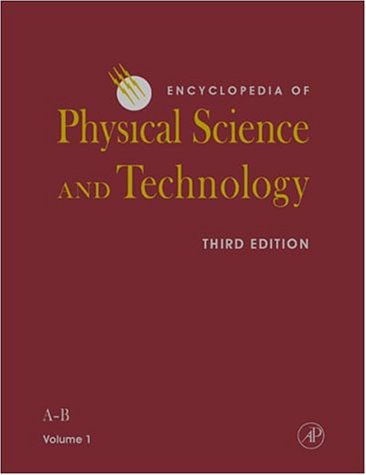
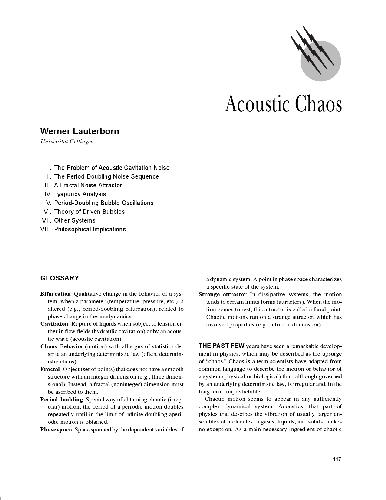
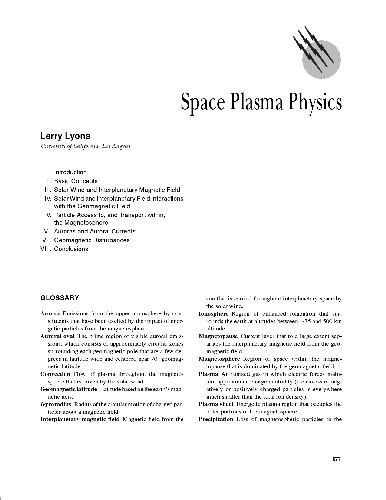
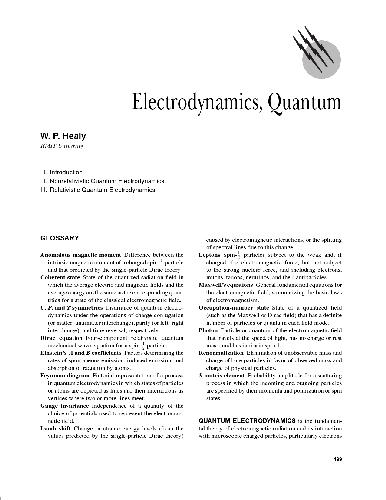
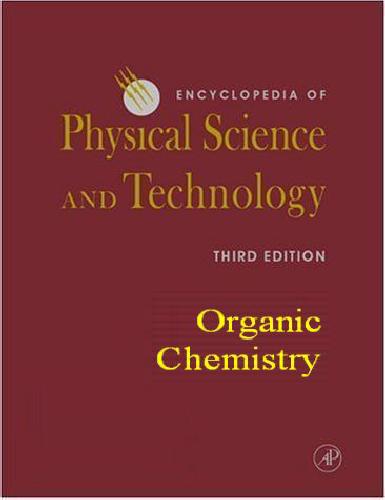

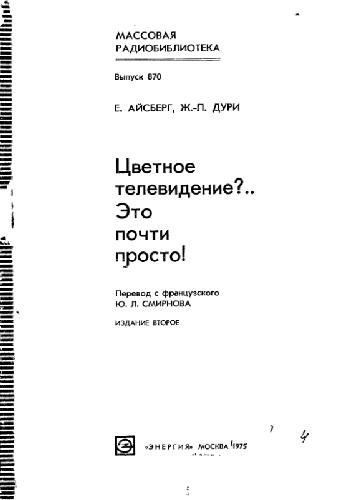
Reviews
There are no reviews yet.